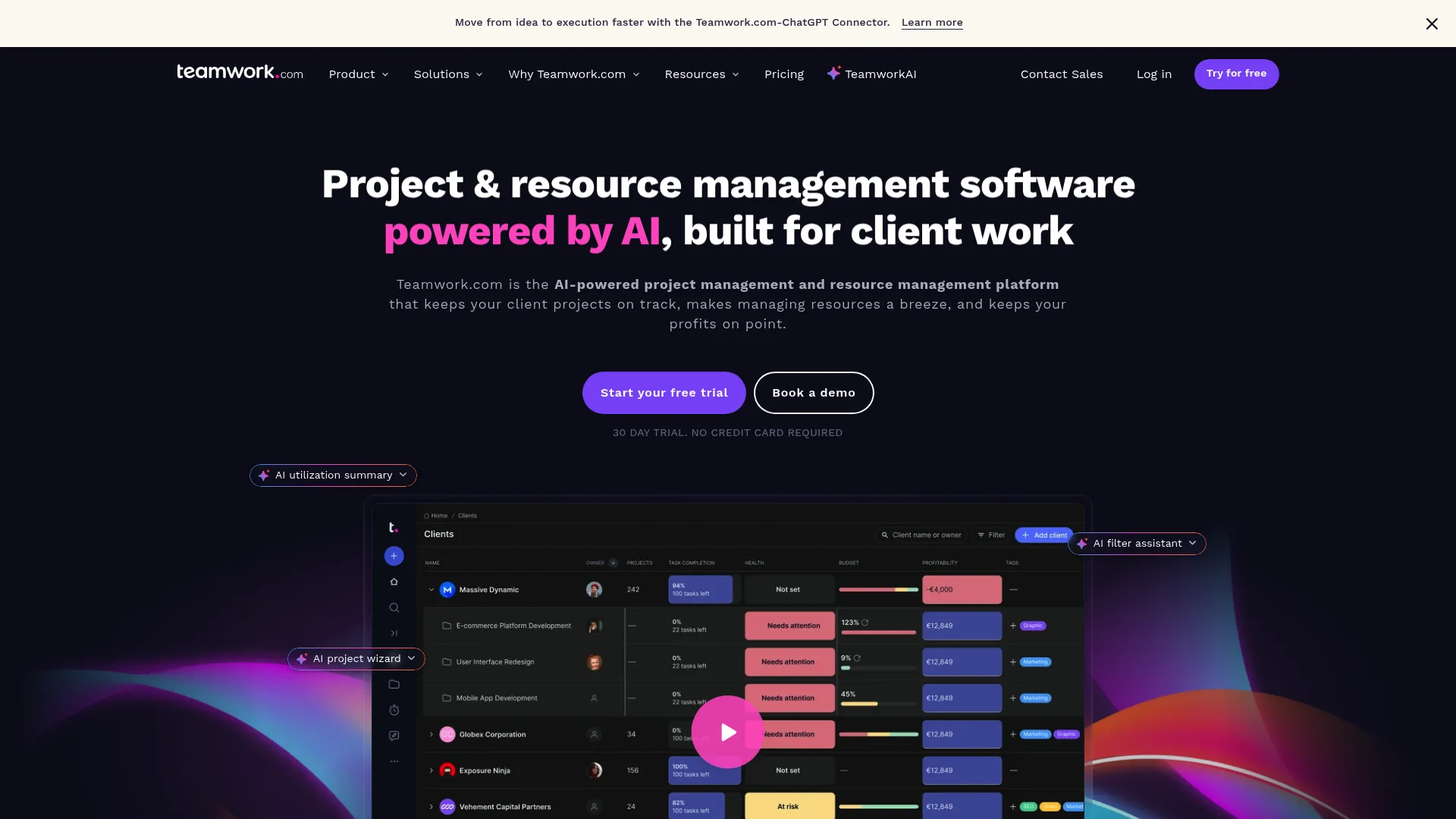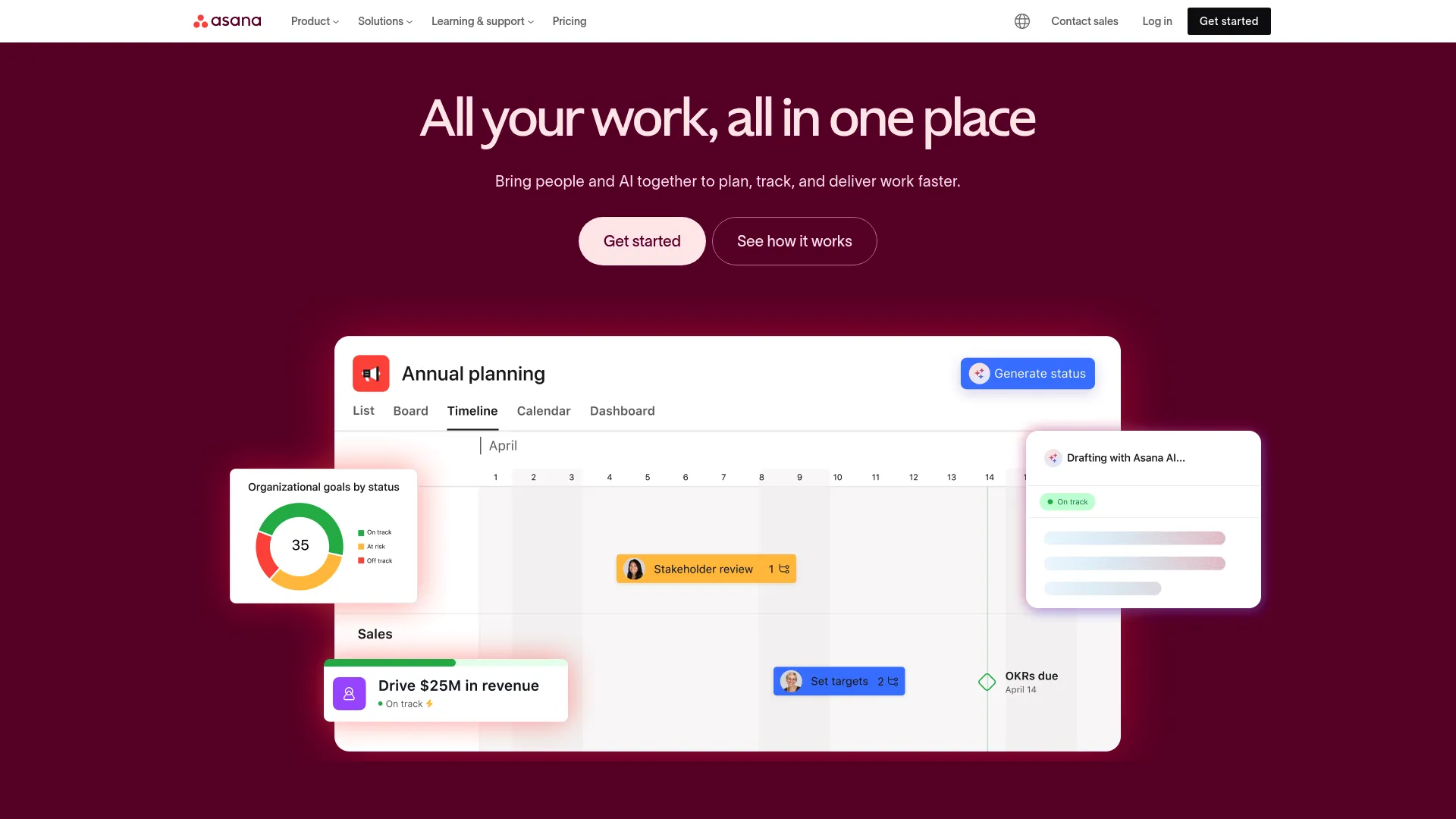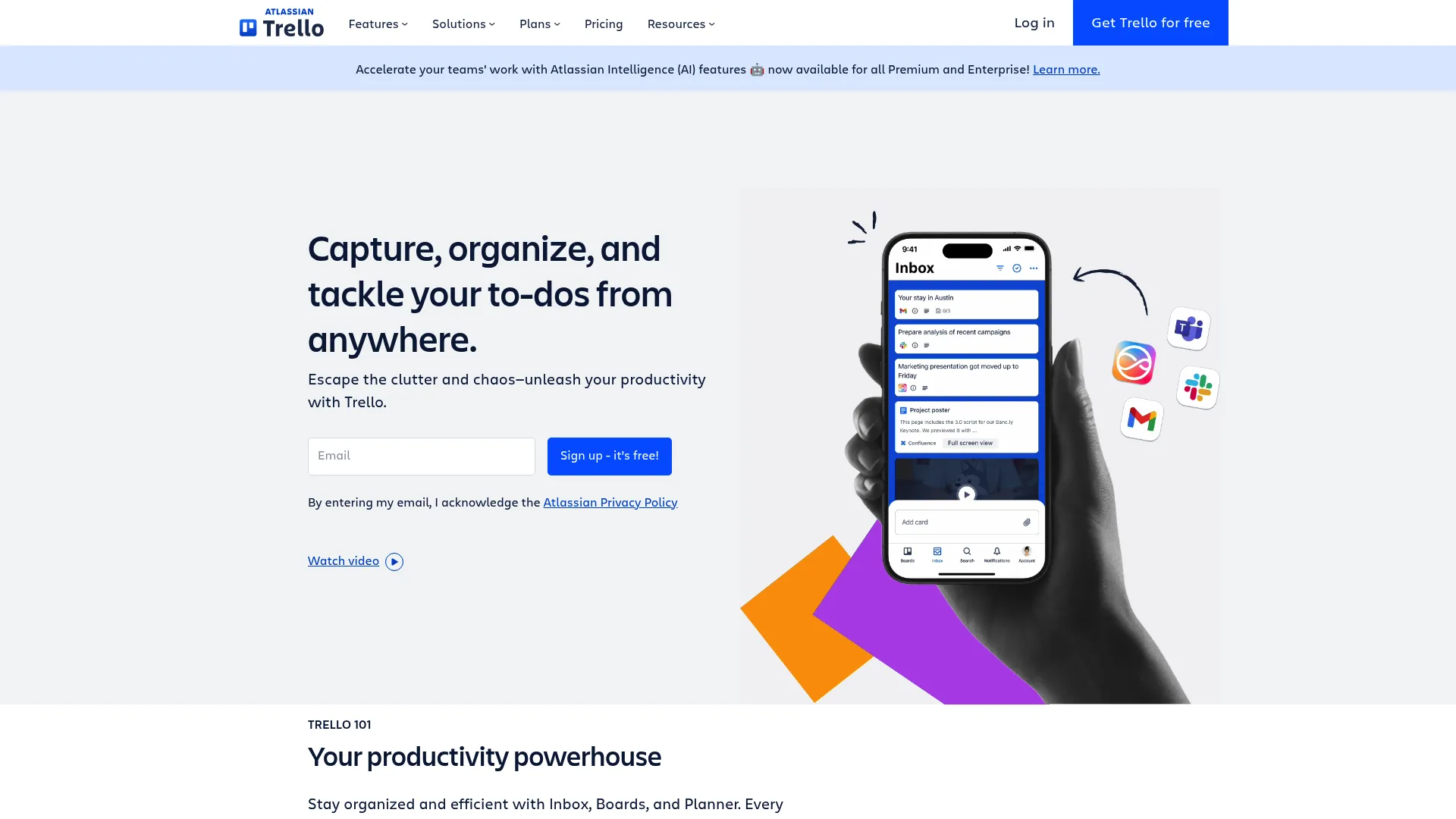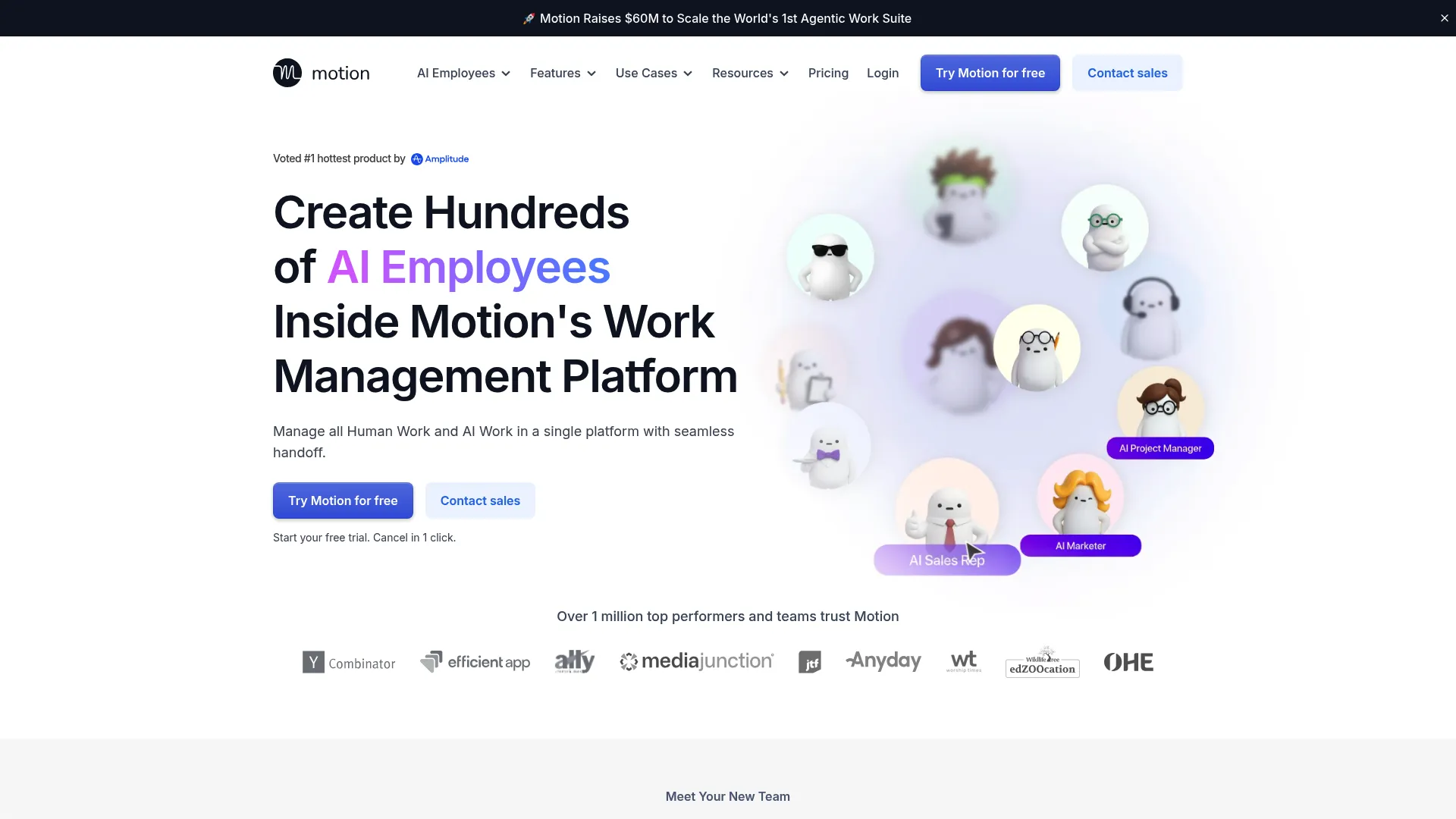
10 Monday.com Alternatives That Actually Deliver in 2025: Our Complete Breakdown
Look, I’ll be straight with you – monday.com starts out great, but then the bills start piling up. I’ve watched too many teams get excited about all those colorful boards and fancy features, only to realize six months later they’re paying way more than they budgeted for. Sound familiar?
After helping dozens of clients find better solutions (and dealing with my own monday.com sticker shock), I’ve put together this honest breakdown of 10 alternatives that won’t break the bank or drive you crazy. These aren’t just random tools I found online – they’re platforms I’ve actually used with real teams dealing with real deadlines.
Table of Contents
-
Quick Overview (Skip the Fluff)
-
How I Actually Tested These
-
Teamwork: When You Need Real Human Support
-
ClickUp: The Kitchen Sink Approach
-
Asana: Pretty but Pricey
-
Wrike: For When Things Get Complicated
-
Trello: Keep It Simple, Stupid
-
Smartsheet: Excel Users, This One’s for You
-
Motion: Let AI Handle Your Schedule
-
Plaky: Actually Free (No Catch)
-
Teamplate: Zero Dollars, Forever
-
Sunsama: For Recovering Workaholics
-
Other Tools Worth Mentioning
-
Questions Everyone Asks
-
Bottom Line
Quick Overview (Skip the Fluff)
Here’s what you actually need to know without the marketing BS:
Teamwork ($11-$20/month) – These guys actually answer their phones when stuff breaks. Rare these days.
ClickUp ($7-$12/month) – It’s like someone took every feature request ever made and said “yes” to all of them. Can be overwhelming.
Asana ($11-$25/month) – Looks gorgeous, works smoothly, costs more than you’d like for the good stuff.
Wrike ($10-$25/month) – Built for big companies with complicated needs. Probably overkill for most teams.
Trello ($5-$10/month) – Three columns: To Do, Doing, Done. Sometimes that’s all you need.
Smartsheet ($9-$19/month) – Excel but with superpowers. Perfect if your team lives in spreadsheets.
Motion ($12-$19/month) – AI schedules your day automatically. Works great until it doesn’t.
Plaky (Free) – Seriously free. No gotchas, no user limits. Seems too good to be true but isn’t.
Teamplate (Free) – Another genuinely free option. Makes you wonder how they pay the bills.
Sunsama ($16-$20/month) – For people who want to actually have a life outside work.
Comparison Table
|
Platform |
Best For |
Starting Price |
Free Plan |
Key Strength |
Ease of Use |
|---|---|---|---|---|---|
|
Teamwork |
Superior Support |
$10.99/user/month |
Yes (5 users) |
Phone support |
Really intuitive |
|
ClickUp |
All-in-One Value |
$7/user/month |
Yes (unlimited personal) |
Feature comprehensiveness |
Learning curve exists |
|
Asana |
Clean Design |
$10.99/user/month |
Yes (15 users) |
Beautiful interface |
Pretty intuitive |
|
Wrike |
Enterprise Features |
$10/user/month |
Yes (5 users) |
Complex project handling |
Takes time to learn |
|
Trello |
Simplicity |
$5/user/month |
Yes (10 boards) |
Kanban boards |
Dead simple |
|
Smartsheet |
Spreadsheet Familiarity |
$9/user/month |
Yes (1 user) |
Excel-like interface |
Familiar for Excel users |
|
Motion |
AI Scheduling |
$12/user/month |
14-day trial |
AI automation |
Pretty smooth |
|
Plaky |
Unlimited Free |
Free |
Yes (unlimited) |
No restrictions |
Easy to pick up |
|
Teamplate |
Zero Cost |
Free |
Yes (unlimited) |
Completely free |
Straightforward |
|
Sunsama |
Work-Life Balance |
$16/month |
14-day trial |
Intentional planning |
Calming to use |
How I Actually Tested These
Instead of just reading feature lists and regurgitating marketing copy, here’s what I actually did:
Set up real projects with messy, real-world data. Invited actual team members (not just myself clicking around). Tried to break things by doing stuff normal people do – like uploading weird file types, creating way too many tasks, and seeing what happens when someone accidentally deletes something important.
I focused on the stuff that actually matters when you’re trying to get work done:
-
Can someone who’s never used it figure it out in 10 minutes?
-
What happens when your team grows from 5 to 15 people?
-
How much will this actually cost when you need the features that matter?
-
Can you get help when things go sideways?
The rating stuff is based on real usage, not demo presentations. These tools have been through the wringer with actual deadlines and stressed-out team members.
Teamwork: When You Need Real Human Support
Last Tuesday at 2 AM, one of my clients had a project timeline completely fall apart right before a big presentation. They called Teamwork’s support line and actually got a human being who knew what they were talking about. Problem solved in 15 minutes.
That’s the kind of thing that makes Teamwork worth considering, even though it costs a bit more than some alternatives.

The platform itself is solid without being flashy. You can build Gantt charts that don’t look like they were designed in 1995, track time without wanting to throw your laptop out the window, and set up automations that actually work instead of creating more problems.
What’s Actually Good About It
The phone support thing is huge. When you’re stressed about a deadline, chatting with a bot or waiting 24 hours for an email response just doesn’t cut it. Their free plan gives you more than most companies’ paid plans, which is refreshing.
The interface makes sense. New team members can usually figure out how to create tasks and update projects without needing a training manual. The automation stuff works without requiring a computer science degree.
Document editing and collaboration happens right in the platform, so you’re not constantly switching between apps. The budget tracking actually helps you stay on track financially instead of just showing pretty charts.
Where It Falls Short
You’re paying a bit more than monday.com, which defeats the purpose if you’re trying to save money. The app selection isn’t as huge as some competitors – if you use a lot of niche tools, you might be out of luck.
The mobile app sometimes gets confused about what’s synced and what isn’t, though they usually fix it pretty quickly. Data visualization is fine but not spectacular – don’t expect mind-blowing dashboards.
Real Talk on Pricing
Free plan works for small teams. Paid plans start at $10.99 per person per month. Not the cheapest, but the support alone might be worth it if your team can’t afford downtime.
ClickUp: The Kitchen Sink Approach
ClickUp is what happens when developers can’t say no to feature requests. They’ve got 15 different ways to view your projects, AI assistants, built-in chat, time tracking, goal setting, document creation, email management, and probably a coffee maker somewhere in there.

It’s simultaneously the best and worst thing about ClickUp. You can probably replace three or four other tools with it, but good luck figuring out how to set it all up.
The Good Stuff
The free plan is genuinely impressive – you get features that other platforms charge hundreds for. Once you get past the initial “where the hell is everything” phase, you can customize it to work exactly how your team thinks.
The value is unbeatable. Even their paid plans pack in more functionality than you’ll find anywhere else for the price. The variety of project views means your team can work however they’re most productive – developers can use sprint boards while marketers prefer calendar views.
Their AI assistant (ClickUp Brain) can actually help with task creation and project planning, though it’s still learning. The automation capabilities are extensive once you figure them out.
The Not-So-Good Stuff
New users often feel like they’re drinking from a fire hose. There are so many options and settings that it’s easy to get lost for hours just trying to set up a simple project.
The platform can be slow, especially if you’re working with large projects or lots of integrations. Customer support is only available during business hours, which can be a problem if you’re working with global teams.
The automation builder is powerful but not as intuitive as simpler alternatives. You’ll spend time learning how to make it work the way you want.
Money Talk
Free plan is actually useful. Paid plans start at $7 per person monthly. Hard to beat the value if you can handle the complexity.
Asana: Pretty but Pricey
Asana is the project management tool that makes you want to organize your life. Everything looks clean and polished, the animations are smooth, and new team members can usually figure it out without much help.

The problem? Getting to the actually useful features costs more than you’d expect.
What Works
The interface is genuinely beautiful and intuitive. Your team won’t resist using it because it actually feels good to work with. The data visualization is top-notch – you can create dashboards that tell a real story instead of just looking busy.
They integrate with pretty much everything (over 300 apps), which matters if your team already has a bunch of tools they can’t live without. Multiple project views are all well-designed and actually useful – list, board, timeline, calendar all make sense.
Custom fields and task templates save tons of time once you set them up. The goal tracking features help you see the bigger picture beyond individual tasks.
What Doesn’t
The free plan is pretty limited compared to what you get elsewhere. To access the features that make Asana actually better than a shared Google Doc, you’re looking at $24.99 per person monthly for the Advanced plan.
No phone support, which can be frustrating when you need help with something time-sensitive. The pricing jump to get advanced features is steep for growing teams.
The Price Reality
You’ll probably need the paid plans to make it worthwhile. Starting at $10.99 per person monthly, but the good stuff is in the $24.99 tier.
Wrike: For When Things Get Complicated
Wrike doesn’t mess around with being user-friendly. It’s built for organizations that have genuinely complex projects with multiple departments, dependencies, and reporting requirements that would make other platforms cry.

If you’re managing simple projects, Wrike is like using a bulldozer to move a houseplant. But if you need the bulldozer, nothing else will do.
The Power User Stuff
Advanced task management with dependencies, critical path analysis, resource allocation – all the project management buzzwords that actually matter when you’re dealing with complicated stuff.
The integration library connects with virtually every business tool you can think of. Custom dashboards and analytics that help you make actual decisions, not just pretty charts.
Capacity planning tools help managers understand team workloads before problems arise. Risk assessment features identify potential issues before they derail projects.
The Learning Curve Reality
Expect weeks or months before your team becomes productive. The interface can feel overwhelming when you just want to update a simple task status.
Smaller teams often find it’s way more than they need. The pricing reflects the enterprise focus, so it’s expensive for what most teams actually use.
The automation builder is complex enough that you might need dedicated training. Features that should be simple often require multiple steps.
What You’ll Pay
Free plan exists but is pretty basic. Team plan starts at $10 per person monthly, Business hits $25. Worth it if you need the complexity, overkill if you don’t.
Trello: Keep It Simple, Stupid
Sometimes you just want to move cards from “To Do” to “Done” without fighting with complicated software. Trello gets this completely.

Three columns, some
Three columns, some cards, maybe a few colors. That’s it. Your least tech-savvy team member can master it in about five minutes.
Why Simple Works
Getting started takes minutes, not hours. No training needed because it’s immediately obvious how everything works. The mobile apps actually work well, which is rarer than it should be.
Pricing stays reasonable even as your team grows. You get automation features (Butler) on the free plan, which most other tools charge for. Power-Ups extend functionality when you need specific features without cluttering the basic interface.
Customer support is genuinely helpful and responsive when you need assistance. The community is huge, so finding answers to questions is usually pretty easy.
When Simple Isn’t Enough
Complex projects quickly outgrow what Trello can handle. No Gantt charts, timeline views, or fancy reporting. If you’re managing multiple interconnected projects, you’ll hit the limits fast.
Collaboration features are basic compared to more comprehensive platforms. Teams needing advanced project tracking will find Trello limiting as they grow.
The Damage
Free plan covers the basics. Paid plans run $5-$10 per person monthly. Hard to complain about the price.
Smartsheet: Excel Users, This One’s for You
If your team lives in Excel but you need better collaboration and project tracking, Smartsheet feels familiar but with superpowers.

It looks like a spreadsheet, works like a spreadsheet, but has all the project management features that Excel lacks.
The Familiar Feel
Excel users can be productive immediately. No learning new interfaces or workflows. You get all the formulas and functions you expect, plus collaboration that actually works.
Form builders collect data directly into your sheets, eliminating manual data entry. Security and compliance features meet enterprise requirements. Gantt charts and calendar views provide visual project tracking without forcing teams to abandon their preferred data entry methods.
The automation and workflow management handle repetitive tasks while maintaining the flexibility that spreadsheet users demand.
The Spreadsheet Limitations
While powerful, it can’t match Excel’s full functionality for complex calculations. Some features have restrictions that don’t exist in regular spreadsheets.
The mobile app gets mixed reviews from users who need full desktop capabilities on the go. The learning curve exists despite familiarity – project management concepts still require understanding.
Cost Breakdown
Free plan available for basic use . Paid plans start at $9 per person monthly, going up to $19. Reasonable value for teams transitioning from Excel.
Motion: Let AI Handle Your Schedule
Motion takes a completely different approach – instead of just tracking tasks, it automatically schedules them into your calendar using AI.

You tell it what needs to be done and when, and it figures out the optimal schedule based on your existing commitments and work patterns.
The AI Magic
The automatic scheduling actually works pretty well. It considers task priorities, estimated durations, and your existing calendar to create realistic daily plans.
When something changes (and something always changes), Motion automatically reschedules everything else. No more spending 20 minutes reorganizing your day every time a meeting gets moved.
Calendar integration works seamlessly with Google Calendar, Outlook, and other popular platforms. The meeting scheduler eliminates back-and-forth emails by showing your actual availability.
When AI Gets Confused
The AI works best with predictable work patterns. If your schedule is chaotic or highly variable, Motion sometimes creates plans that don’t make sense.
Pricing is higher than traditional project management tools. The reporting capabilities are limited compared to platforms focused on project tracking.
Teams needing complex project management features might find Motion insufficient. The AI scheduling approach works better for individual productivity than team collaboration.
The Investment
Individual plan costs $19 monthly, team plan is $12 per person. Worth it if the AI scheduling clicks with how you work.
Plaky: Actually Free (No Catch)
Plaky breaks the traditional pricing model by offering unlimited everything on their free plan. No user limits, no task restrictions, no file storage caps.

I kept waiting for the catch, but there really isn’t one. It’s just free project management software that actually works.
The Free Reality
Unlimited users and tasks without any gotchas. Kanban and Gantt chart views, file sharing, collaboration features – all included.
The interface is clean and makes sense. New users can get productive quickly without extensive training. Subitems and task dependencies handle complex project structures without restrictions.
Conditional coloring helps teams quickly identify project status. Activity tracking keeps everyone informed about progress without overwhelming notifications.
The Trade-Offs
Limited integrations compared to established platforms. The user community is smaller, so fewer tutorials and resources available.
Some advanced features that power users expect might be missing, though they’re actively developing new functionality. The platform is newer, so long-term reliability is still being proven.
What It Costs
Nothing. Seriously. Check their website if you don’t believe me.
Teamplate: Zero Dollars, Forever
Teamplate goes even further than Plaky – they’ve made their entire platform completely free, forever. Every feature, unlimited users, no premium tiers.

I’m honestly not sure how they plan to make money, but that’s their problem, not yours.
The Complete Package
Kanban boards, calendar views, real-time chat, video calls, file sharing – everything you’d expect from a paid tool.
No artificial limitations or upgrade pressure. Growing teams never face user-based pricing increases. Task tagging and comments help teams stay organized without paying for the privilege.
The collaboration tools are comprehensive enough to replace multiple paid applications. Everything works without storage limits or feature restrictions.
The Questions
Limited advanced features compared to premium platforms. Smaller user community means fewer resources available.
Basic integrations might not connect with specialized tools your team relies on. Long-term sustainability is a question mark – how do they keep the lights on?
The platform is less mature than established alternatives, so feature development and reliability remain questions.
The Price Tag
Zero. Forever. They promise.
Sunsama: For Recovering Workaholics
Sunsama approaches project management from a different angle – instead of helping you cram more tasks into your day, it helps you plan realistic workloads that respect your time and energy.

If you’re tired of feeling like you’re always behind, Sunsama might be worth considering.
The Mindful Approach
Daily planning forces you to consciously choose what you’ll work on instead of just reacting to whatever screams loudest.
Time tracking helps you understand how long work actually takes, which most people are terrible at estimating. Focus mode blocks distractions during deep work sessions.
Integration with major productivity tools pulls tasks from various sources into one planning interface. Work-life balance features include shutdown rituals and reflection prompts that help maintain boundaries.
The beautiful, minimalist design creates a calming work environment rather than overwhelming dashboards.
The Limitations
Higher pricing for what’s essentially individual productivity software. Team collaboration features are minimal.
The manual planning approach might frustrate people who prefer quick task capture or automated scheduling. Complex project management needs aren’t well-served by the intentional simplicity approach.
Teams needing traditional project management features will find Sunsama insufficient for their needs.
The Investment
$20 monthly, or $16 if you pay annually. Expensive for what it is, but might be worth it if work-life balance is a priority.
Other Tools Worth Mentioning
Jira dominates software development but is overkill for most other teams. Notion combines everything but requires significant setup time. Airtable offers unique database functionality with light project management. Microsoft Planner works well if you’re already living in the Microsoft ecosystem.
Questions Everyone Asks
What’s the cheapest option?
Plaky and Teamplate are completely free. For paid options, Trello at $5-10 monthly or ClickUp at $7 monthly offer the best value.
Which has the best support?
Teamwork, hands down. They actually answer their phones.
Can I move my data from monday.com?
Most platforms have import tools, though the process varies. ClickUp and Asana make it relatively painless. Test with a small project first.
What works for big teams?
Wrike for complex enterprise needs, Asana for scaling (if budget allows), ClickUp for growing teams that need features without enterprise pricing.
Do these integrate with my existing tools?
Asana leads with 300+ integrations, Wrike covers enterprise tools extensively, ClickUp and Teamwork handle popular business apps well. Newer free platforms have limited but growing options.
For teams evaluating different project management solutions, our comprehensive ClickUp review provides additional insights into one of the most popular alternatives. Understanding how Airtable compares to traditional project management tools can help teams determine if database-style organization fits their workflow.
Bottom Line
After testing all these platforms with real teams and real projects, here’s what actually matters:
If you need genuine support when things break: Teamwork
If you want maximum features for your money: ClickUp
If budget is tight but you need something that works: Plaky or Teamplate
If you just want simple task management: Trello
If your team loves Excel: Smartsheet
If you’re tired of being overwhelmed: Sunsama
The perfect project management tool doesn’t exist, but these alternatives prove you don’t have to stick with monday.com’s escalating costs and feature limitations. Pick the one that matches how your team actually works, not the one with the shiniest demo.
When evaluating project management tools, consider how they integrate with your broader marketing technology stack. Our detailed Monday.com review examines the platform’s strengths and limitations in marketing contexts.
At The Marketing Agency, we understand that selecting the right tools is just one piece of building an efficient, results-driven organization. Our scientific approach to marketing strategy helps businesses optimize their entire operational ecosystem, not just their project management workflows. When you’re ready to apply the same analytical rigor to your marketing efforts that you’ve used to evaluate these project management alternatives, we’re here to help you build systems that deliver measurable ROI and sustainable growth.
Ready to optimize your marketing operations with the same precision you’re applying to project management? Contact The Marketing Agency today to discover how our data-driven approach can transform your business results.





